Our Visits to The British Virgin Islands
A year after Yim and I left Belize, our friends, Stu and Fran, who chartered Two If By Sea, had also left and made their way to the British Virgin Islands, where they established their chartering operation again and sent us a postcard when they arrived telling us to get our arses down there, so we visited for the first time in 2005.
In 2003, while we were all living in Belize, I had taught Stu to scuba dive in the Sapodilla Cayes and now they were BOTH certified Instructors so this was going to make for a fun vacation.
There are about 60 islands in the BVI, and of those, just 16 are inhabited. Tortola, Anegada, Jost Van Dyke and Virgin Gorda contain most of the action. The rest range from private isles like Richard Branson’s Necker and Moskito islands to snorkelling hotspots like Salt Island, and my personal favourite spot, the wreck of the RMS Rhone (featured in the movie The Deep), to uninhabited spits of land best explored on foot.
Most of the islands are volcanic in origin, making the terrain hilly, rugged, and lush with vegetation—with the exception of flat and easy-to-identify Anegada. It owes its distinct geology to ancient creatures, aka it’s mostly limestone and coral.
I prefer being on a Catamaran when we visit.
The British Virgin Islands, along with the US Virgin Islands, are all part of the Virgin Island archipelago, named by Christopher Columbus when he floated up upon them in 1493.
Within those 60 islands, there are 20 national parks. They include places like the RMS Rhone Marine Park, which also covers Dead Chest Island. Lore says Blackbeard abandoned 15 of his crew here after a mutiny, leaving them nothing but a bottle of rum (and inspiring the pirates’ song “fifteen men on the dead man’s chest, yo-ho-ho and a bottle of rum,” fromTreasure Island).
We have visited three times and not really spent much time ashore. We are here for sailing, snorkelling and scuba diving.
We’ve started our visit in a different location each time. In 2005, we landed on Beef Island and Stu and Fran simply walked up from the beach from Trellis Bay to get us at the airport and we wheeled our bags down to their dinghy and headed off to the catamaran. On that trip, Stu and Fran were chartering a 56 foot Cat, which was incredibly spacious for 4 people.
In 2012, we flew into Beef Island and took a taxi into Road Town to meet Sally and Colin before boarding our 40 foot catamaran and in 2016, we flew into St. Thomas with our friends Karen and Nick to meet up with Fran and started our trip from Red Hook Marina on board Two if by Sea, a 48 foot catamaran.
Sadly, that trip was a goodbye dedication to Stuart, who passed away in 2015 and was our last time aboard Two If By Sea before she was sold to new owners. It was the end of an era for Yim and I.
Of the three trips, the first visit in 2005 was so laid back. We had sailed often with Stu and Fran in Belize and just being together again made the trip easy.
Trellis Bay is part of Beef Island and that is where we originally started our adventures of the British Virgin Island.
So, Fran thought the best way to get us introduced was to sail over to Great Dog Island the first morning and dive The Chimney.
Really two sites in one, the Chimney is nestled into the northern corner of the bay on Great Dog’s western side. Ideal for all divers and fun for snorkelling too, it features an area called the Fish Bowl, which is home to yellowtails, parrotfish, sergeant majors, angelfish, and others, all of which are accustomed to being hand fed by visiting divers. As soon as you open a pocket, they’ll surround you, vying for your attention and a snack. Having been fed, they will return to their nibbling among the massive coral heads that dot the sand and rubble bottom.
Once you’ve passed through the Fish Bowl, head north to find the Chimney itself, while enjoying the sight of the canyons and ridges that parallel the shore as you travel. At a depth of 45 feet, you will find a canyon that points back toward shore. As you pass beneath the archway, you’ll find yourself in a narrow canyon with walls that nearly touch at the top. Encrusted in beautifully coloured coral, and home to all kinds of tiny shrimp, spotted rock lobsters, and tiny fish taking shelter in and around the sponges that proliferate along its walls, this is the Chimney.
If you don’t want to swim through the narrow chimney, you can make your way back up to the top of the boulders and simply go over the top, then make your way back to your mooring at the bowl. I had to go through of course.
Norman Island
Once we go back on board, Stu decided that our next destination would be Norman Island, which would also allow us to have some fun sailing the huge 56 foot Cat straight down the Sir Francis Drake chanel. Heading out from Great Dog Island gave us a straight sail west with lots of room for tacking along the way. The winds were brisk, the sun was warm, the girls were catching up on the foredeck and we were in the British Virgin islands. Stu and I got the sails up and a couple of times, Yim and Fran came back and told us to settle down when we managed to lift one of the pontoons out of the water. A perfect day, in my opinion.
Late in the afternoon, we passed The Indians and made our way into Norman Island Harbour, generally called The Bight, the most southerly of the British Virgin Islands, and said to have inspired Robert Louis Stevenson’s Treasure Island.
While Stevenson’s tale is one of fiction, history tells us that this really was a popular spot for pirates to hide their treasures. Norman Island has a documented history of pirate booty being stowed here. Rumours persist to this day of more pirate gold to be found…
The Caves
The Caves are on the western edge of Norman Island and consists of three caves, all populated with schools of colourful fish. The walls of the caves are patch-worked with red sponge and orange cup coral and packed with yellowtail snapper, pufferfish, trunkfish, parrotfish, sergeant majors, damselfish, squid, lobsters, sea cucumbers, blue tangs and, not surprisingly – barracudas.
Snorkels are the outfit of the day here. The first cave will captivate you as soon as you go inside, you will have an incredible view ahead of you but make sure you watch out for sea urchins. There’s a bit of wave action in and out of the cave and it has a tendency to push you towards the cave walls, which, of course, are covered in sharp coral. If available, bring a powerful uderwater light in with you to really see what you are snorkeling around and ideally, a 1 MM wet skin.
When you enter the second cave, you will notice the water is not as deep and has bigger schools of fish. If you are lucky, they will pool and you will be surrounded by a ball of fish to swim through. At least, that’s my idea of a lucky day.
The last cave is perhaps the most captivating one, with colourful fish, swimming in big schools. All make for a great afternoon of fun in the water.
The Indians
The Indians (above) are four unique shaped rocky pinnacles right next to Norman Island – teeming with colourful marine life. These easy to spot rocky pinnacles rise about sixty feet above the water surface and is one of the BVI’s best snorkelling and diving spots with an abundance of coral gardens and marine life.
About half a mile north of Norman Island, The Indians offer both shallow and deep areas that will satisfy a novice or an expert. When the seas are calm, snorkelling is best on the eastern side, while the western side features 50 foot drops with elkhorn and brain coral. The BVI National Parks Trust has placed many moorings at The Indians for use.
The first time we dove here was in 2005, led by Fran and the dive was magical. She had us enter the water to the south of the Indians and around the northeast section and then through a cave, which Yim was nervous about so Fran and I went through first and Stu stayed behind to follow Yim through. It wasn’t a long cave but long enough that once inside, it meant you were committed to having to go through as there was not enough room to turn around with tanks on. Yim was so excited once she made it through.
In 2012, we spent time here with Colin, Sally, Rob and Ester and Ester wanted me to teach her to scuba dive so she and I spent most of our time in the shallows on the east section of the site.
It’s a superb place to spend a few hours.
The legendary floating bar, The Willy T
Anchored in the corner of the Bight, the Willy T is a schooner that has been moored in the waters of the BVI for decades. One of the most infamous features of the Willy T is its notorious tradition of “body shots.” Adventurous patrons are invited to lie on the bar while a shot of alcohol is poured into their mouth from a higher point. This has become a rite of passage for some and a spectator sport for others, often followed by a leap off the side of the boat (clothing is apparently optional at that point).
It’s worth my mentioning that the Willy T has occasionally faced regulatory challenges, causing it to temporarily close or change locations, but its allure persists.
When we visited in 2012 with Sally, Colin, Ron and Ester, we picked up a mooring further back in the bay specifically to be as far away from Willy as possible but the enticement of party time proved too great, even if not for us.
Late one night I heard banging which was seemingly coming from under our boat and I got up to see what was going on. Once on deck, I saw a pair of hands frantically trying to climb onto our transom and managed to get a hold of him until Yim woke up Rob, and he came up and helped me hold on to him. The man was so intoxicated, we could not believe he could actually stay afloat and we had no idea where he may have come from. He thought this was quite funny and was quite persistent in flirting with Rob while we hung on to him. He was much too drunk to get himself out of the water and then we heard a dinghy returning across the bay and I shone a light at them, which, being inebriated, pissed them off and they started towards us, yelling at us to turn the light off.
When they got close, while still yelling loudly at us, Yim asked them if they knew the person we were hanging onto and one of the girls on the dinghy said, “That’s Stephen”.
It turns out Stephen had had too much to drink on Willy T’s earlier in the day and they had brought him back to the Catamaran moored in front of us – possibly 100 feet away – and Stephen had decided that he wanted to go back and decided he could swim. He made it to our boat, where we pulled him out. Lucky for Stephen, I heard him.
Cooper Island
A beautiful island with a protected anchorage at Manchineel Bay has some of the clearest water in the British Virgin Islands. Cooper Island Beach Club is the main attraction, a small resort with a restaurant, rum bar, coffee shop, boutique, and a lovely outdoor lounge area. It’s a popular stop for yachts and sailing yachts and a nice location to watch the sunset from the deck of a catamaran.
Virgin Gorda
The Baths on Virgin Gorda are a breathtaking natural wonder. I remember sailing in towards them for the first time with Stu, Fran and Yim in 2005 and we were all astounded.
Located on the southern tip of Virgin Gorda, The Baths is a collection of massive granite boulders that have formed into a series of otherworldly grottos and pools. These boulders, some as large as houses, are the remnants of volcanic activity from millions of years ago. Over time, the relentless forces of nature sculpted and eroded the rocks, creating narrow passages and hidden chambers. The result is a surreal landscape of giant boulders strewn across white sandy beaches and turquoise waters.
We have visited three times and each time, we begin our hike from The Baths and head towards Devils Bay. On our last trip, we came across Skull Rock, which certainly lives up to its name. Once you start into the hike, you will enter the cathedral, created by huge leaning boulders. Be prepared mentally. As you progress through, you will need to be using the ropes and ladders which have been constructed within the rocks to climb into and through tight spaces and over rocks to get through the caves.
The path takes you up and down through the rocks. Sometimes the water is ankle deep, sometimes a bit more but it is always easy to wade through. For most of the trail, we all remained awe-struck by the stunning rock formations, tucked-away grottos, and tidal pools. It really is a maze of sorts, and it’s up to you to climb, wade, and crouch your way through each passage. Most people like to spend at least an hour exploring the nooks and crannies before arriving at Devils Bay.
And get this: It’s just three dollars to enter.
The Wreck of The Rhone
The Wreck of The Rhone lies within the Rhone National Park off the western coast of Salt Island. The area is teeming with marine life and it is common to see stingrays, turtles, sharks and green morays, as well as large schools of fish.
The wreck lies in 30 to 110 feet of water, depending on which section you visit. It is a must do on any serious divers list. The wreck is broken up into multiple pieces with the actual hull laying in the deepest water while the propeller is in quite shallow water near the shore and offers beginner divers and snorkelers more opportunity to explore.
The deeper bow part of the wreck is the most intact, and offers an amazing opportunity for divers to enter the wreck easily and comfortably. Once inside, the wreck is open at several points and allows large exit points, as well as a lot of light. There are a ton of nooks and crannies to explore if you bring a good light with you, and each time I have visited, have found something lurking about in the dark recesses.
Yim and I have now been inside this wreck twice. The first time, Yim did not want to enter the hull on our first dive so she chose to swim over the top of the hull with Fran while I entered. She could see my bubbles slipping through the cracks in the hull and making their way to the surface so she could follow my progress, which made her confident enough to come through the wreck on the second dive with me.
We returned in 2012 and this time, Yim felt secure enough to enter with me and instead of heading through the ship, I chose to go the other way, swimming towards to the bow of the ship, which had no light penetrating the interior and we were rewarded with the largest King Crab we had ever seen.
Then in 2016, while diving with Fran, we entered the Rhone again. Once inside, you never quite know what’s in there with you and as you can see, there were schools of fish in front of us but then I felt a presence beside me and was treated with the Hawksbill Turtle you see in the gallery right beside me. He swam through with us, not really much caring about us. And when we exited the hull, Fran spotted a shark but it was too skittish for us to get close enough to it.
This is definitely one of the best dives I have ever done.
To see the entire gallery of photos of this trip, check our my Wreck of the Rhone post.
Anegada
Anegada (literally “drowned island” in Spanish) is the only coral island of the British Virgin Islands volcanic chain and only rises 28 feet above sea level at its highest point. Known for miles of white sand beaches and the 29 kilometre long Horseshoe Reef, one of the largest barrier coral reefs in the Caribbean. The island is known for large salt ponds that cover the west end of the island, which is home to Caribbean flamingos.
Unlike most other anchorages in the British Virgin Islands, Anegada requires some planning and forethought. It is 11.4 nautical miles north of North Sound and depending on the seas and winds, it can be a challenging trip. Boatyball is a service that allows you to reserve a mooring ball in advance. I would highly recommend that you use this service for at least your first night as the mooring balls tend to fill up fast and places to anchor are very limited in Anegada because there are so many coral heads. Don’t even try to chance it. There is a marked channel into Setting Point and it is important stay strictly within the channel.
Once on land, there are quite a few fun things to do. We visited Cow’s Wreck Beach – an ideal place for wading, swimming and long beach walks. Famous for its wealth of conch shell decoration, Cow Wreck Beach Bar is delightful day destination to enjoy a “Wreck Punch” and the Caribbean sun.
Then we headed over to Loblolly Beach. With sheltered coves and nearby reefs, this is a snorkeller’s paradise. However, this beach is vulnerable to changing weather. When we visited, gusty winds played with the waters and there was seaweed on the beach so while Karen, Nick and Fran got some snorkelling in, Yim and I went beachcombing..
Also at Loblolly Beach, you’ll find Big Bamboo Beach Bar and Restaurant, which adds a chilled, colourful vibe to the area with its bright blue benches and tables and hammocks under the shaded trees.
For dinner, we settled on The Wonky Dog . This isn’t merely a restaurant; it’s a well-known institution on the island. Set against the backdrop of the Caribbean Sea, you get a whole experience dining here. Order their grilled lobster, you can choose caught fresh from local waters, or the conch ceviche, for an authentic taste of Anegada.
After the night was done, we headed back to Two If By Sea on our mooring and the next morning, set sail for Guana Island.
Guana Island
Guana (photos below) remains the most unspoiled island of the British Virgin Islands. For those of you seeking sun, solitude, and serious farm-to-table Caribbean cuisine, you will feel right at home at Guana Island. Of course, it is ultra exclusive but if you have $1,500.00 US for the night, they will assure you get a good nights rest.
Spread out over 850 acres of pristine natural beauty, this all-inclusive hideaway apparently has it all: Whitewashed cottages and villas with private entrances and ocean views, a restaurant built into an eighteenth-century ruin serving Michelin-worthy local and international specialties, and seven secluded beaches to soak in those laid-back island vibes. Not to mention a fleet of water sports equipment at the ready, from stand-up paddleboards to snorkelling gear.
Luckily for us, they could not stop us from dropping anchor (in the little harbour in the photo below at far right where the cluster of boats are) and we spent an afternoon getting our last dive of the 2016 trip in and some excellent snorkelling in a nice little secluded bay.
Cane Garden Bay
After Guana Island, we headed down island towards what we were pretty sure was going to be our last visit to Cane Garden Bay and it felt good to be there with Fran, Matt, Karen and Nick.
Probably the best known anchorage in the Virgin Islands, Cane Garden Bay is an aesthetic beauty, chock-full of places to quench your thirst and provide some adventure. Grab a mask, some flippers, and snorkel from the boat and swim around the reef. The sea life here includes octopus, parrotfish and lobsters. Then take a stroll along the beach…
While visiting in 2012, Colin, Sally, Yim and I were having lunch at anchor in Cane Garden Bay when Colin just happened to see Stu and Fran sail by. Literally, I was doing the dishes and Colin yelled, “Two if by Sea” and I jumped up onto the deck and for a few short moments, had a catch up with Stu while he circled our Cat. We yelled back and forth at each other how we would see each other on our 60th birthdays in 2015. That was our plan.
Little was I to know it was the last time I would see Stu alive.
Heading Home
From Cane Garden Bay, we headed slowly off towards Cruz Bay, wherre we had to check back in through US Customs but before getting there, we made sure to pass by Sandy Spit.
This small uninhabited island gets its name from being “spitting distance” to Jost Van Dyke. This tiny “islet” (pictured below at left) sits in the middle of the ocean just off the east end of Jost Van Dyke between Sandy Cay and Green Cay. Measuring less than an acre, this island is a ring of white powdery sand and foliage.
It is exactly what most people have come to the Caribbean to experience: a picture-perfect tropical deserted island with the ideally placed coconut palm in the center surrounded by a barrier reef! It has been the backdrop for many commercials, magazine covers, articles, and advertising campaigns. This coral reef atoll is called a “Spit” because of the small sand dune that has immerged from the ocean by the surrounding barrier reef. Although the island changes shape throughout the year due to the sand moving around in the storms and ground seas, Sandy Spit still withstands the toughest weather with Sea Grape trees, Sea Purslane, and a few Coconut Palms holding it all together.
There is a magnificent sloping coral reef and wall off the South side that is easily explorable by snorkelling.
—
So this was our last visit to the BVI. It was bittersweet and we made the trip to celebrate Stu’s life and to our credit, we partied like he would have loved while we were on Anegada. All of us danced the night away and enjoyed too many boat drinks but in hindsight, Stu would have loved it all.
Some of our best vacation times of our lives were spent in these islands with friends and really, that’s what great vacations leave us with – great memories.
The British Virgin islands is a place I would recommend everyone visit and especially on a charter vacation as what is available by boat is certainly not available on land.
On our last trip there in 2016, we spent our last two days with Karen and Nick in St. Thomas and had a wonderful time.

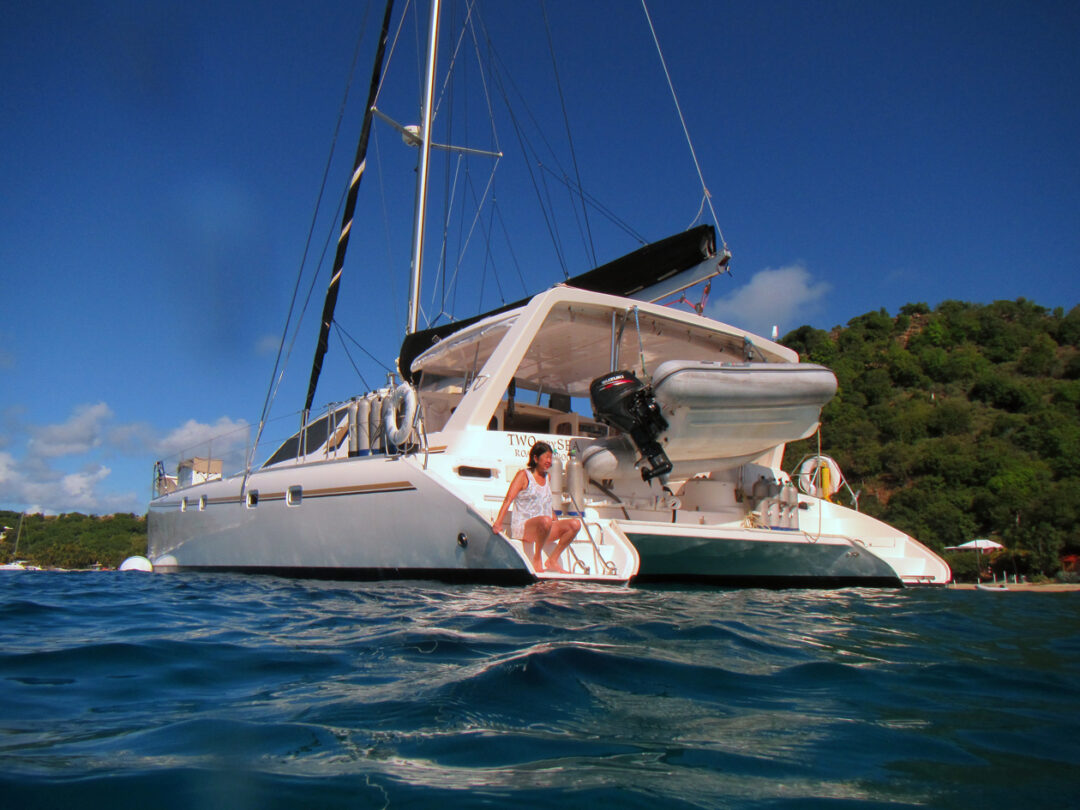
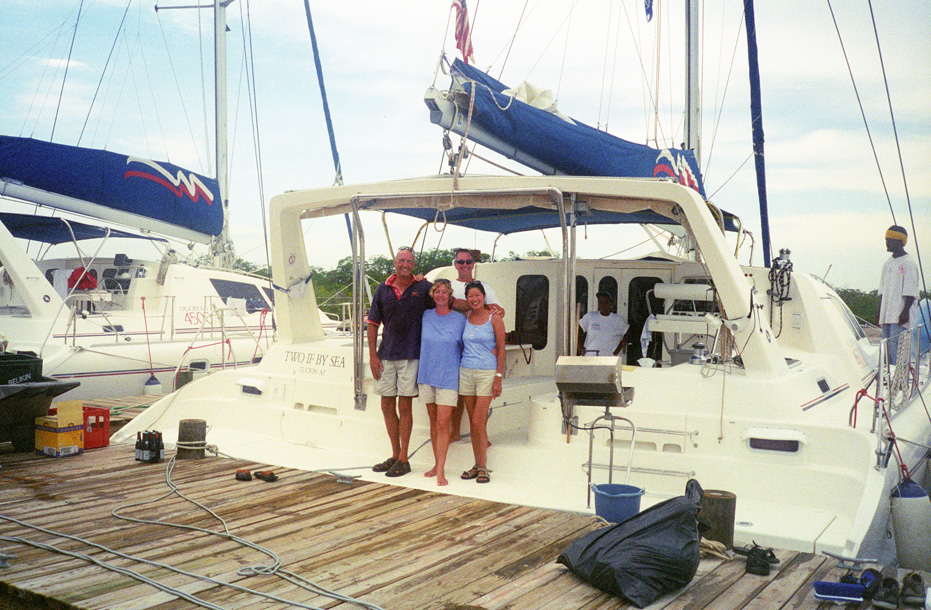
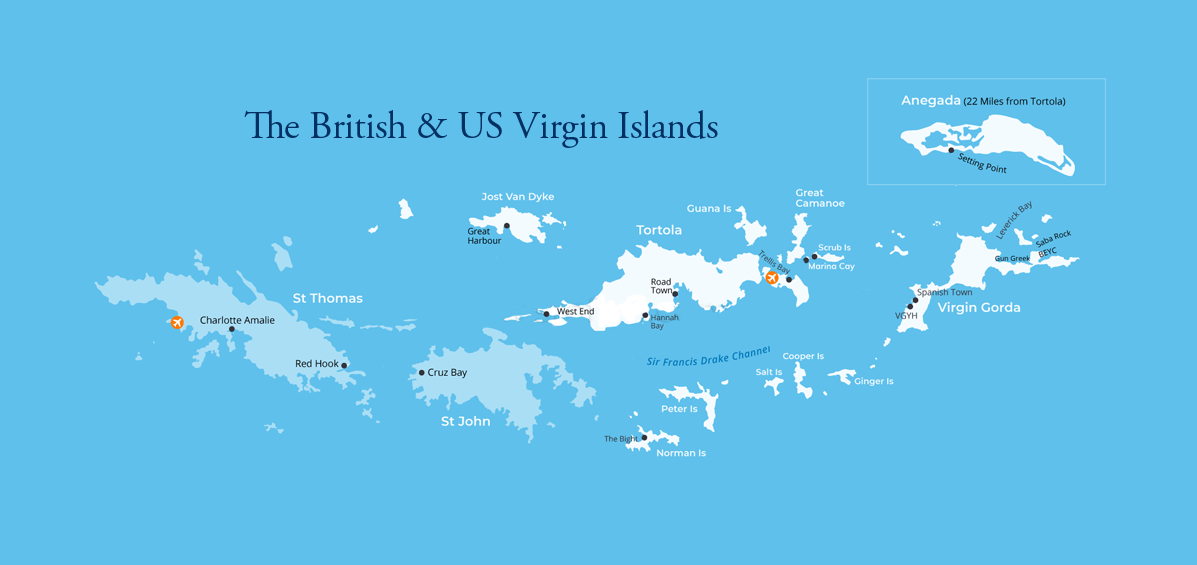
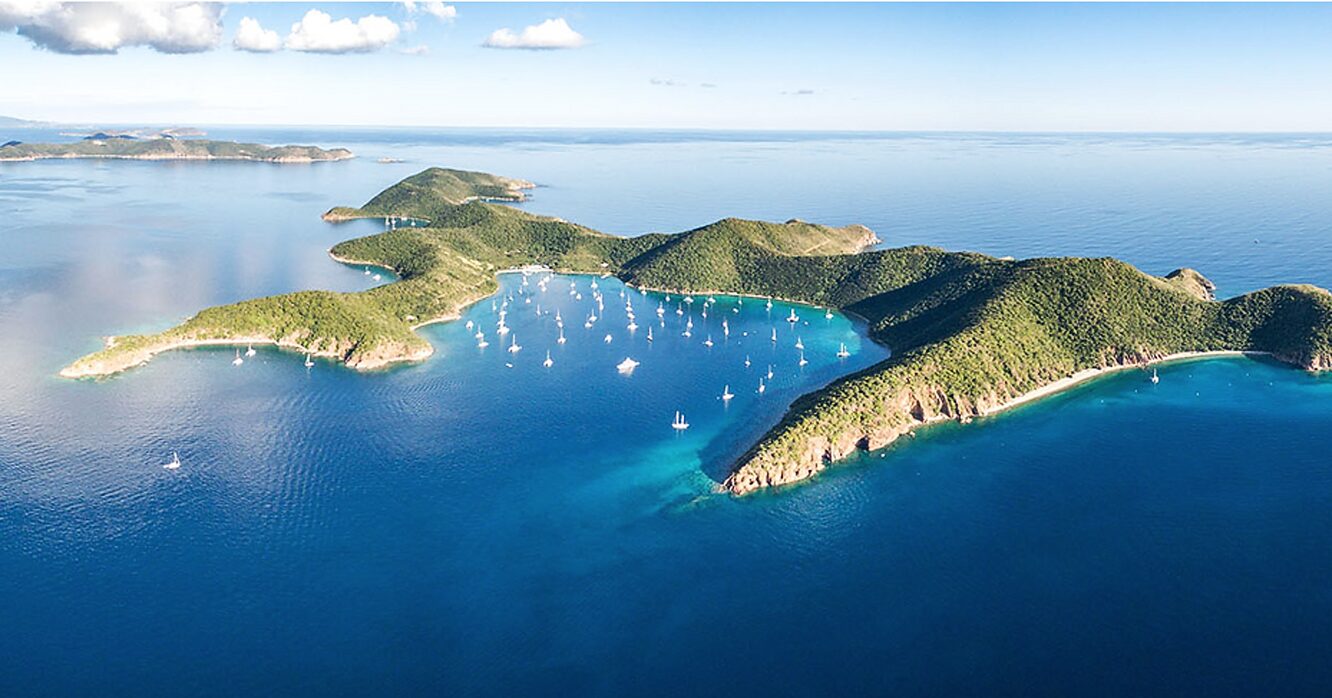
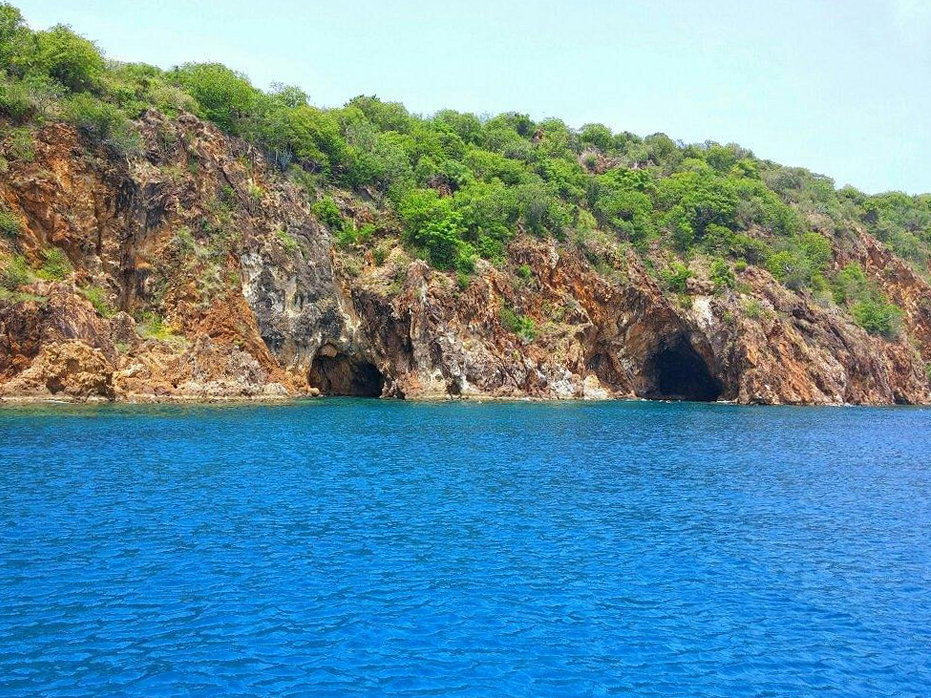

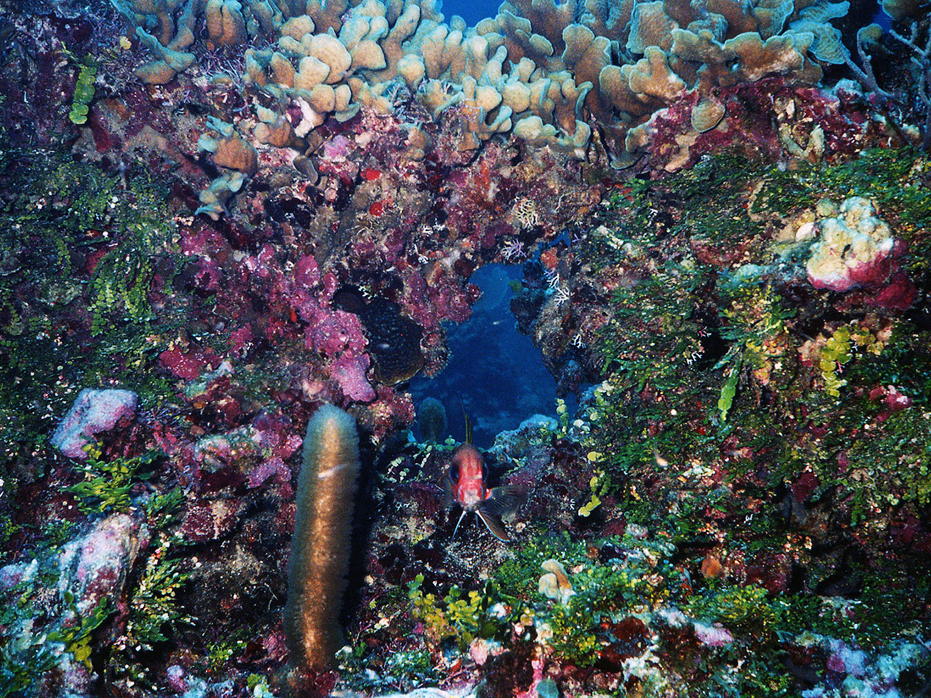

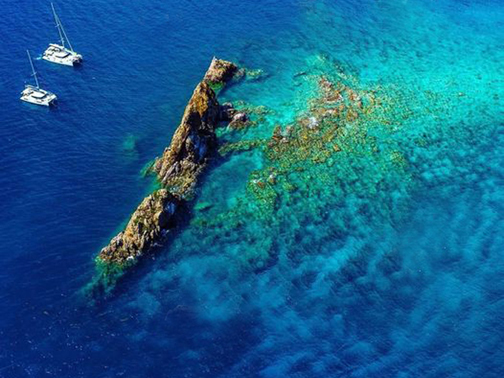
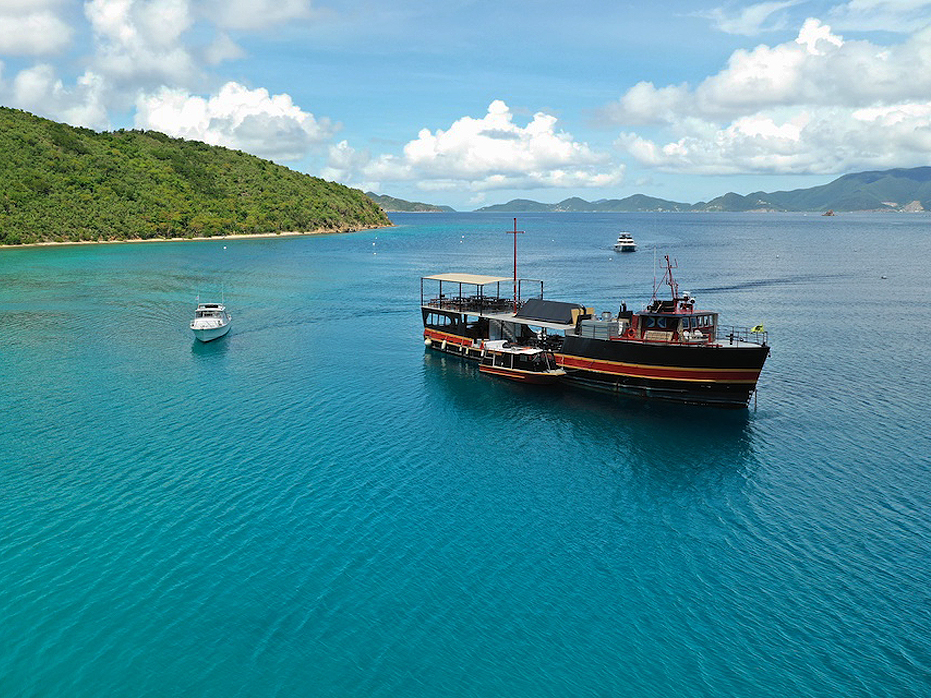
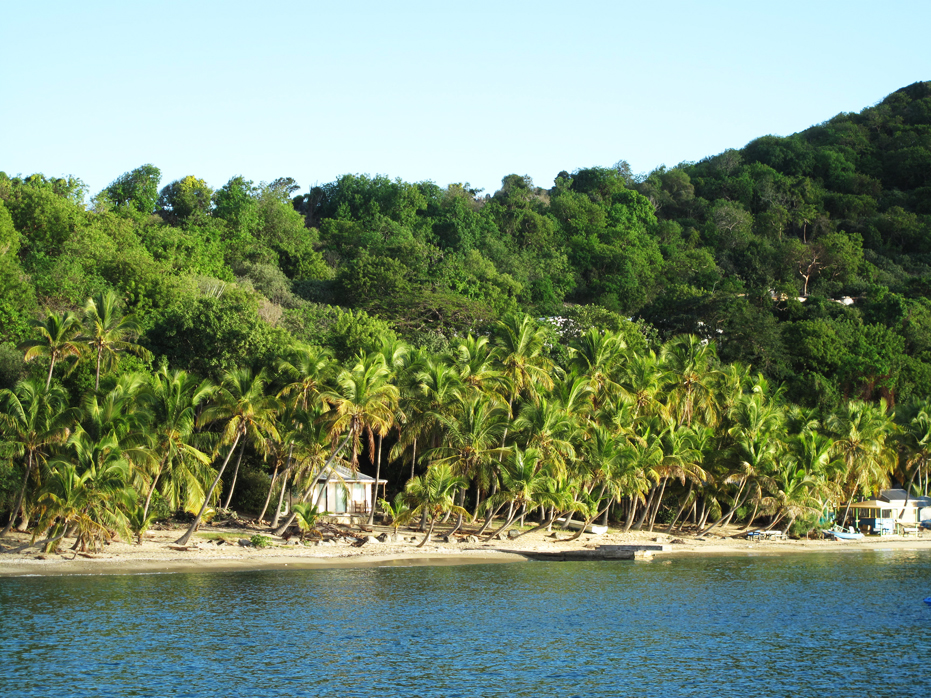
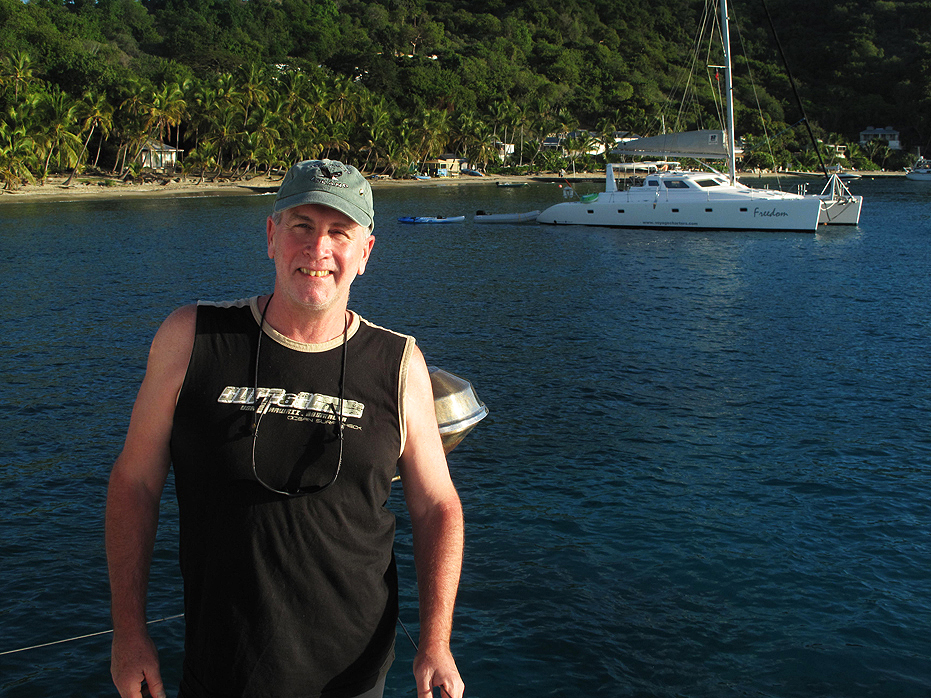
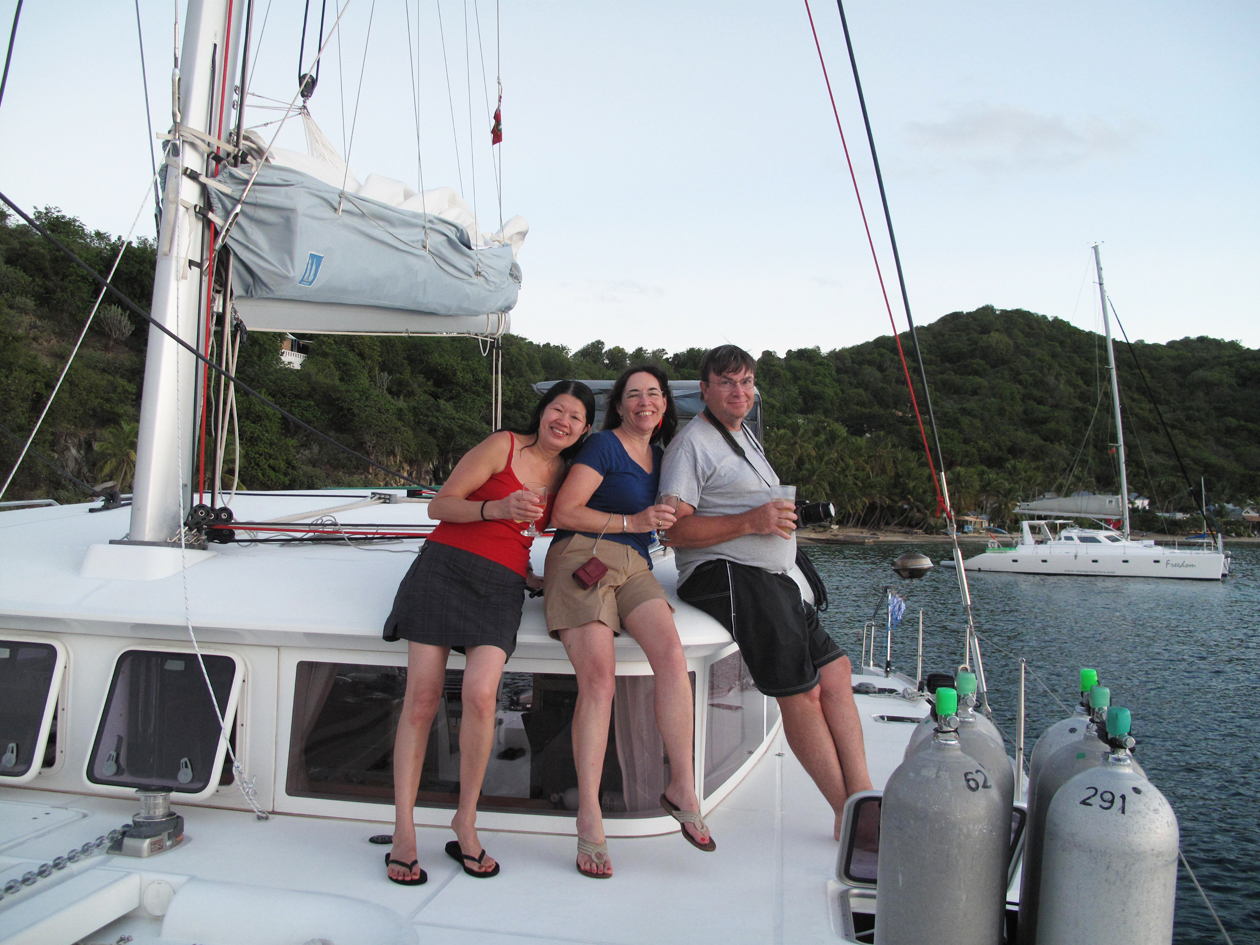
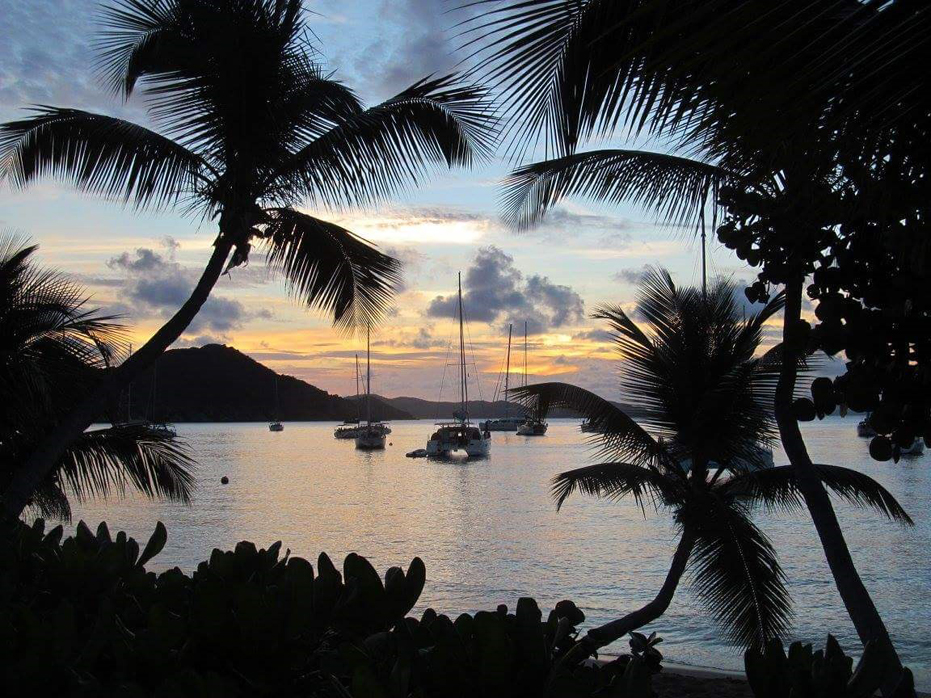
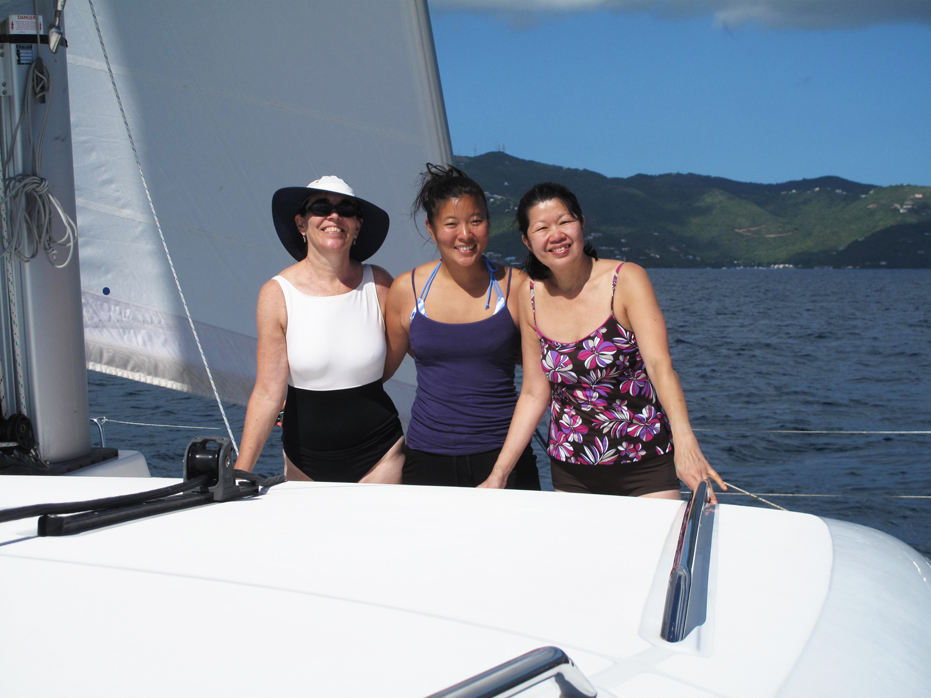

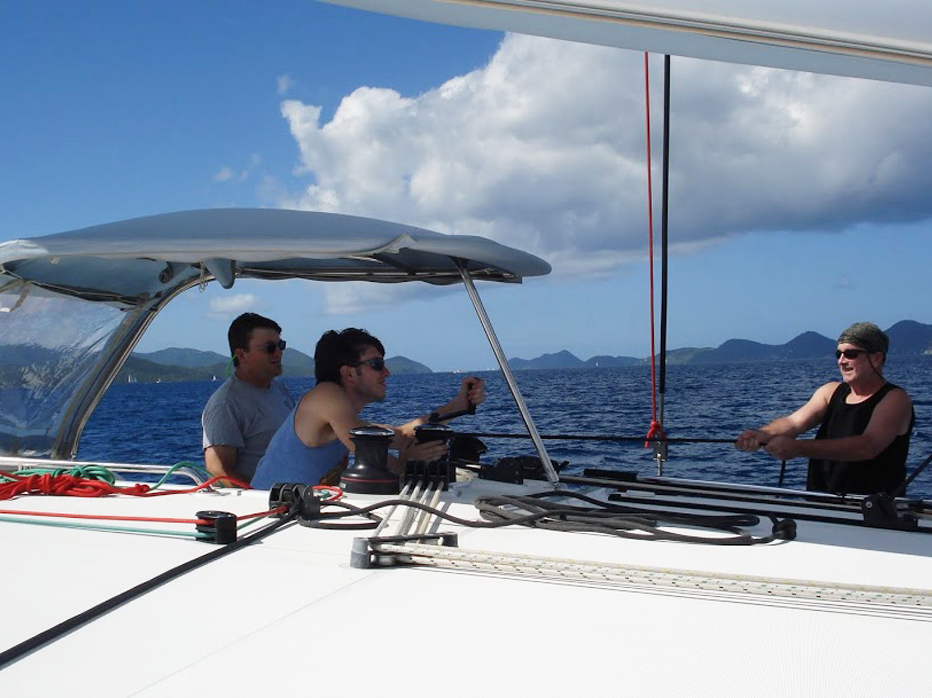
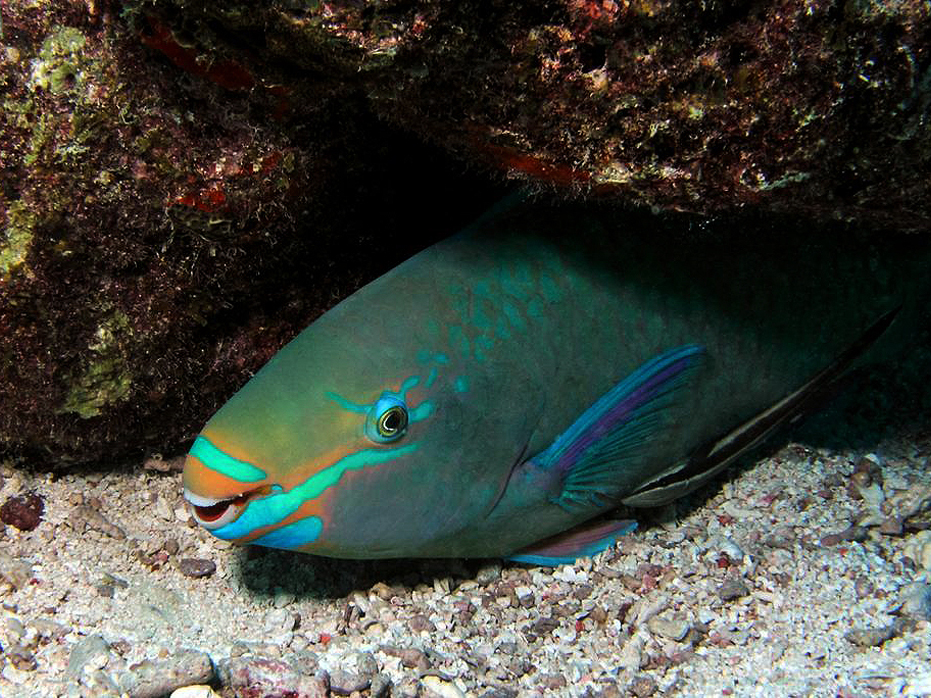
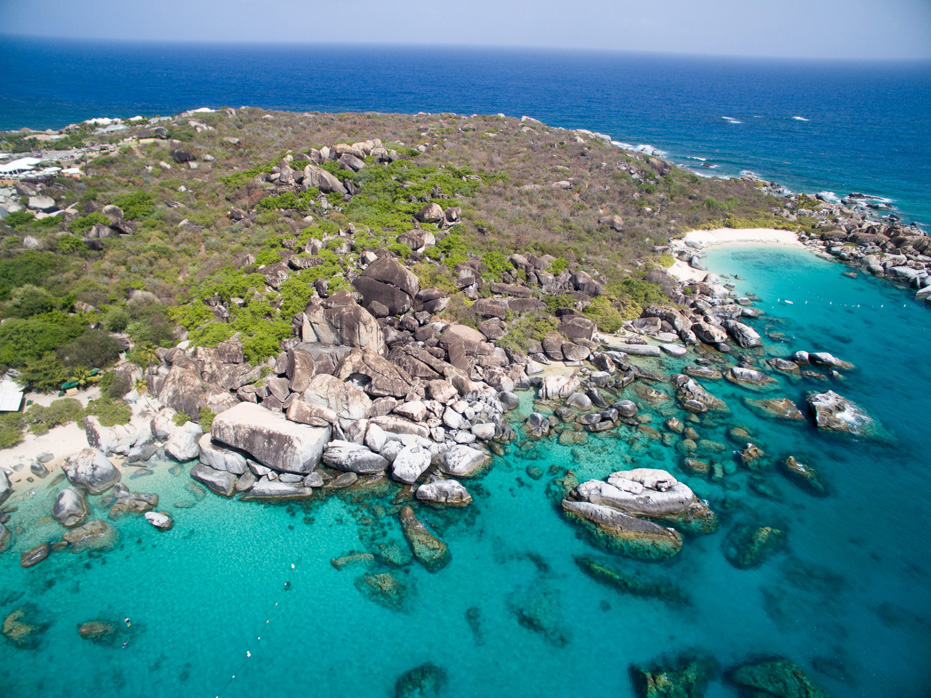
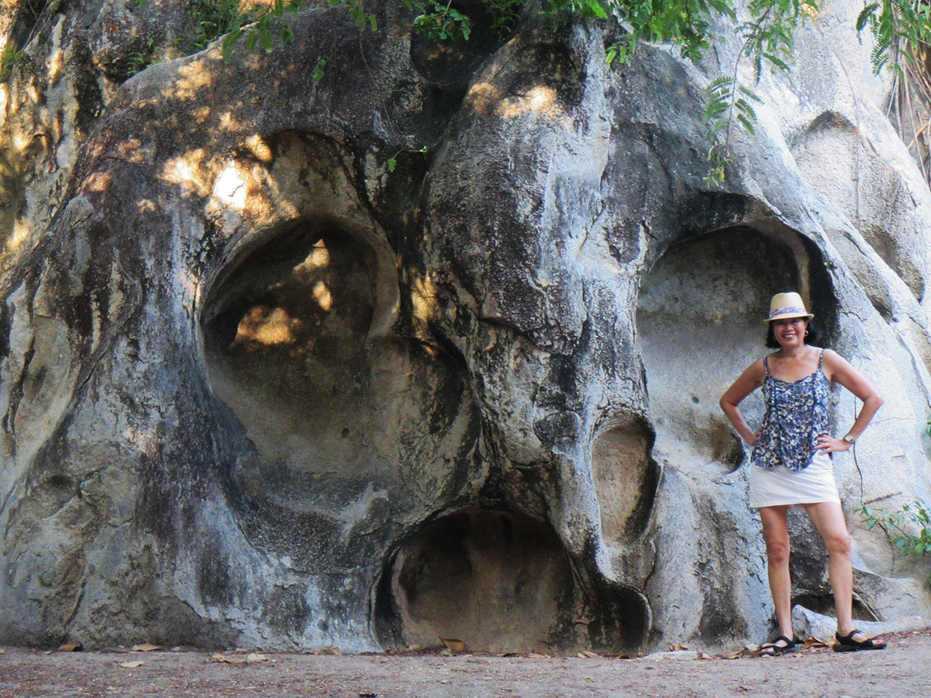
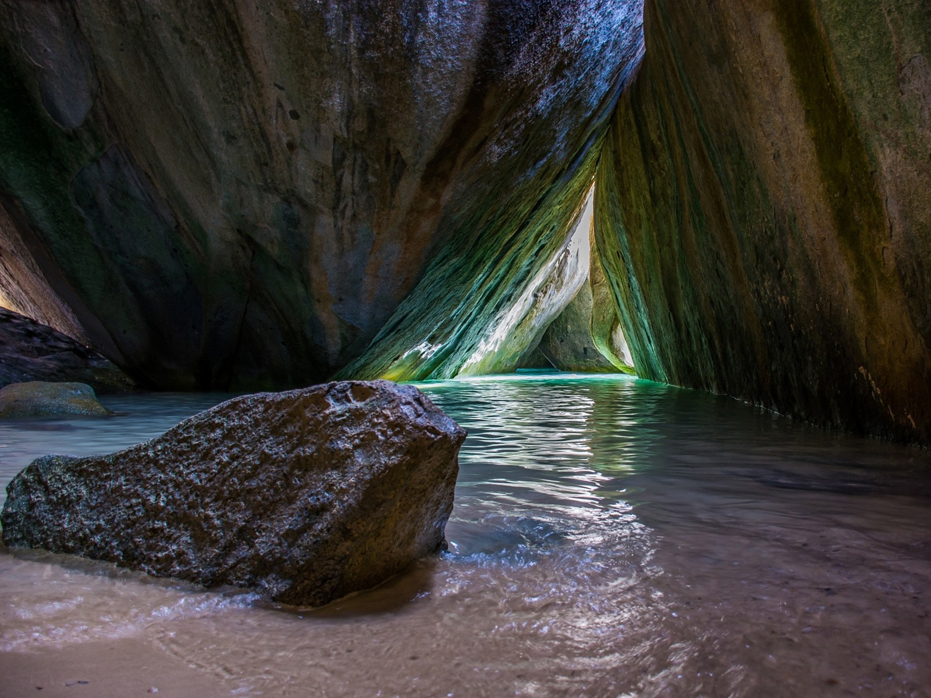
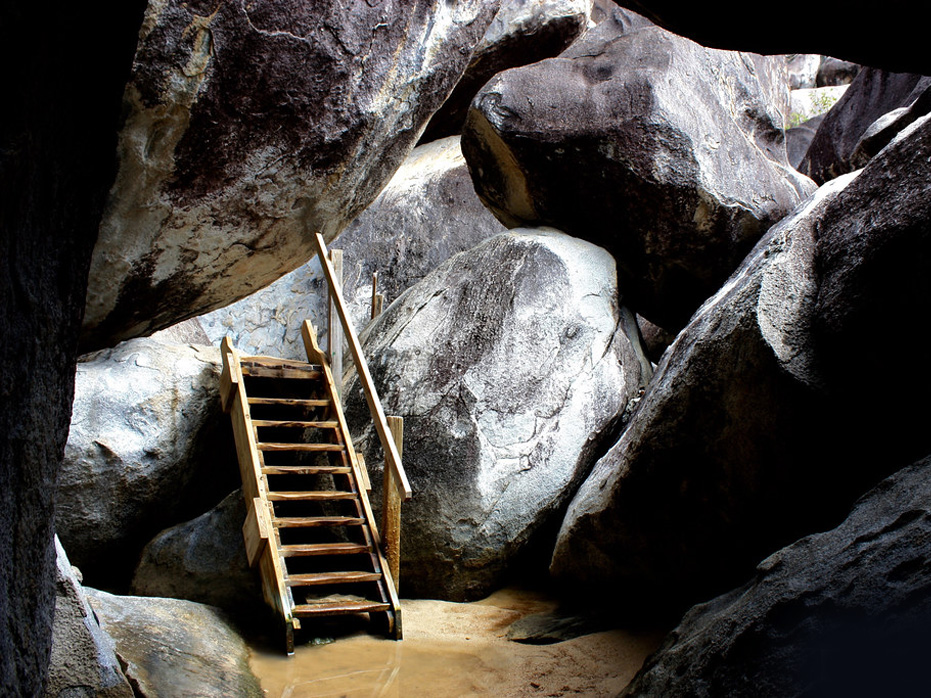

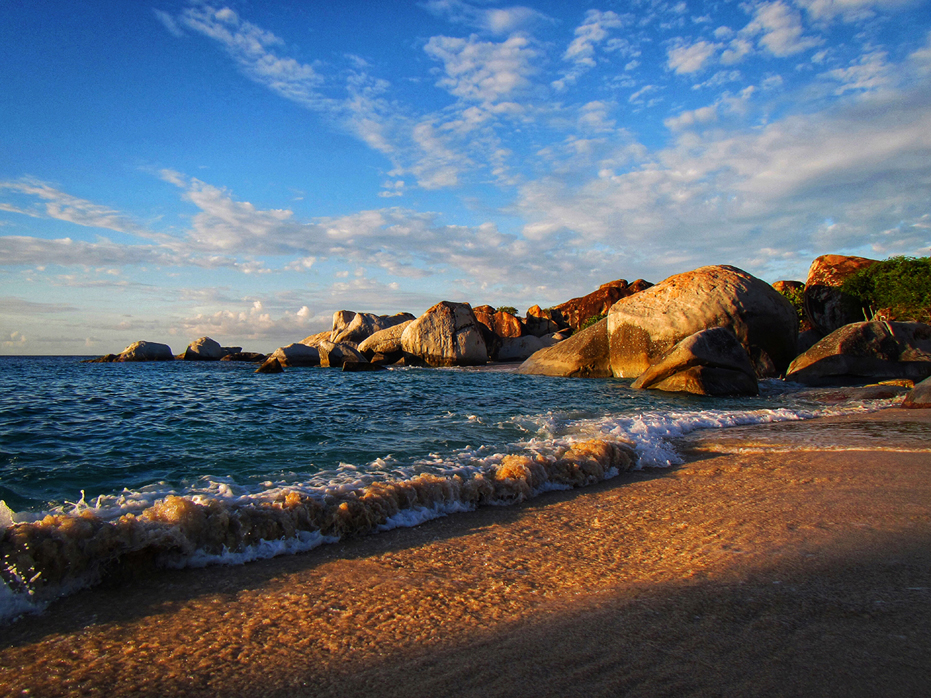


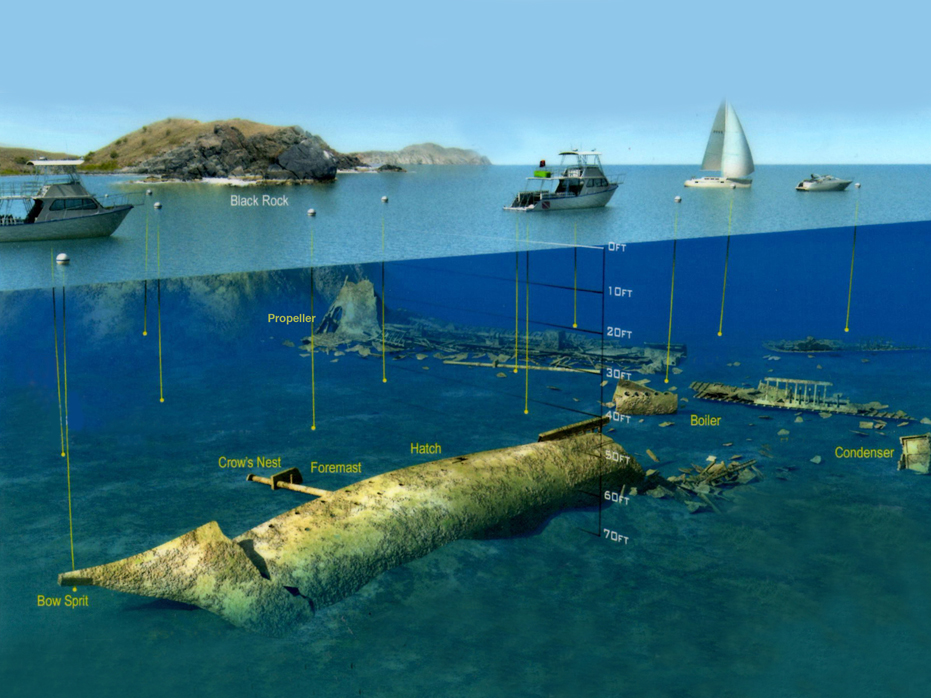





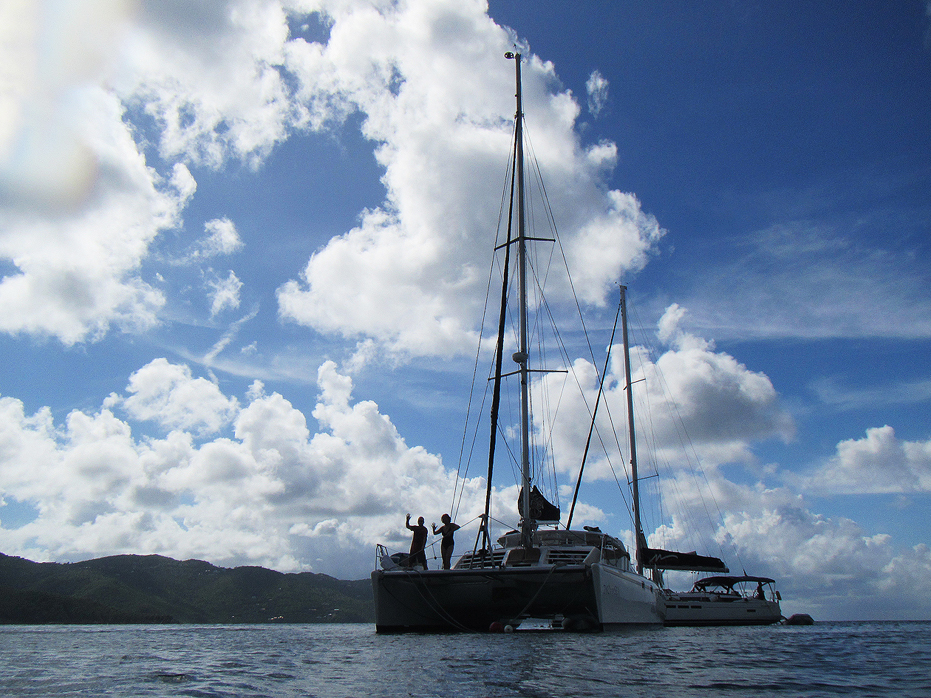
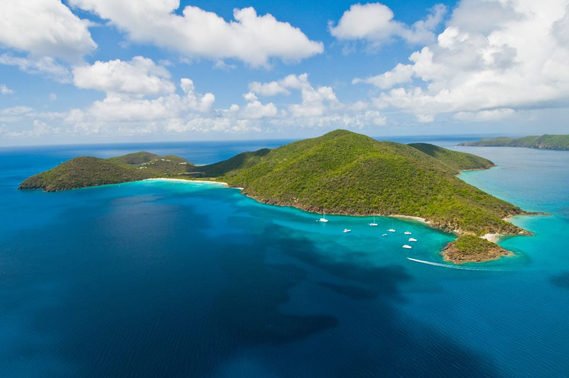


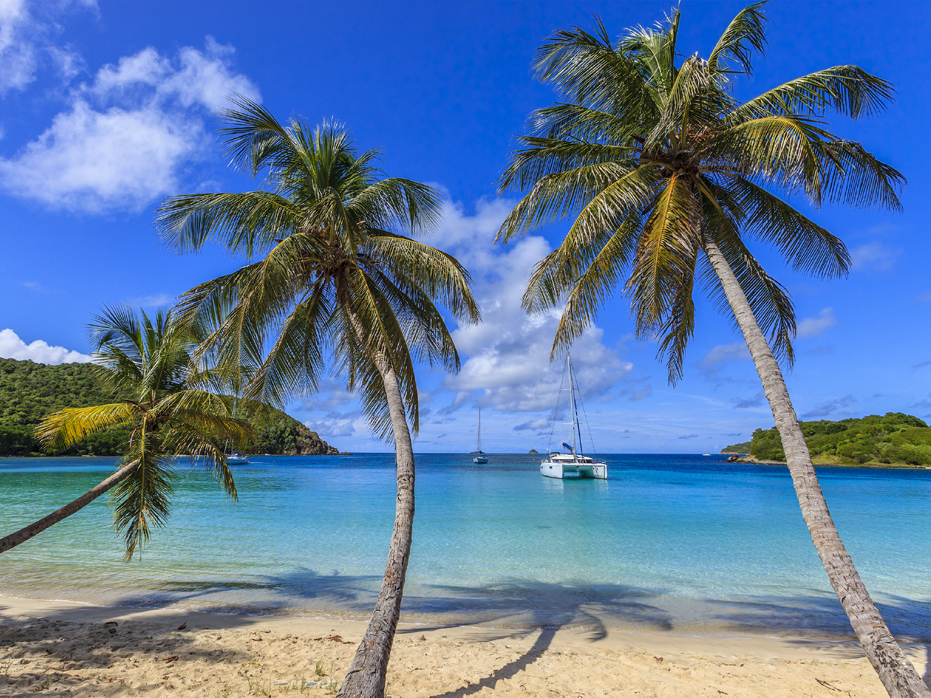
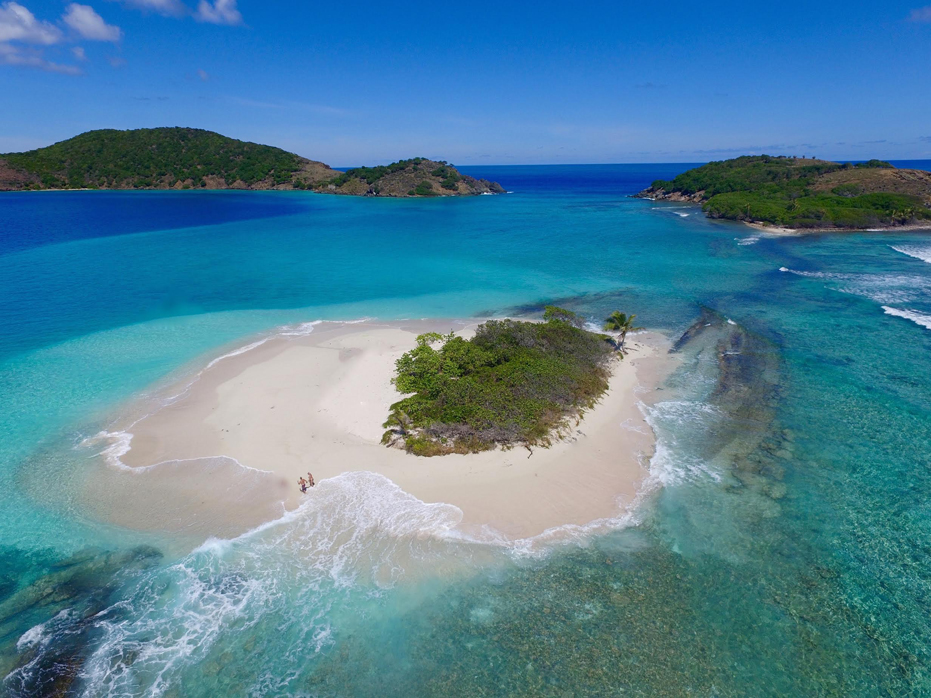



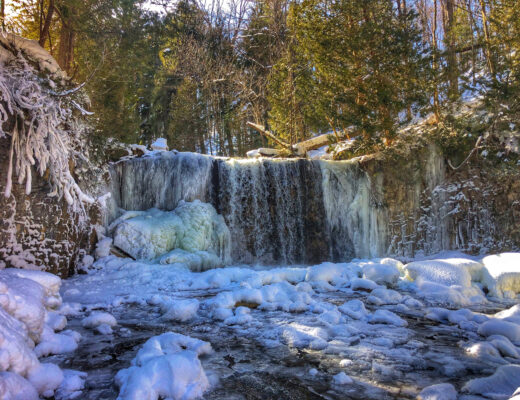
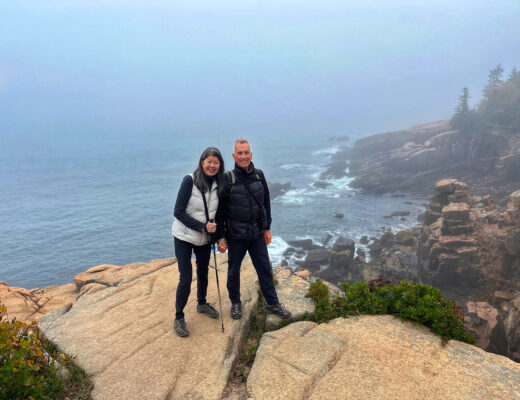
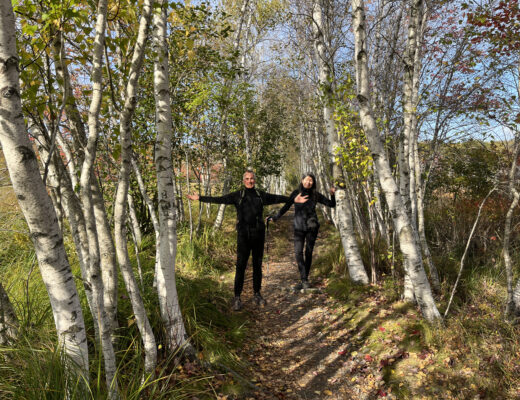

No Comments